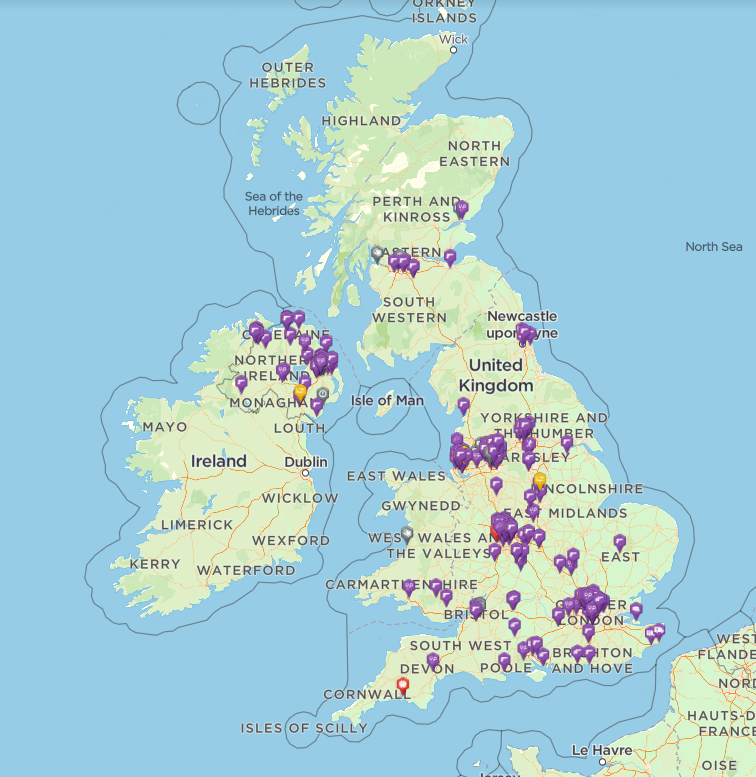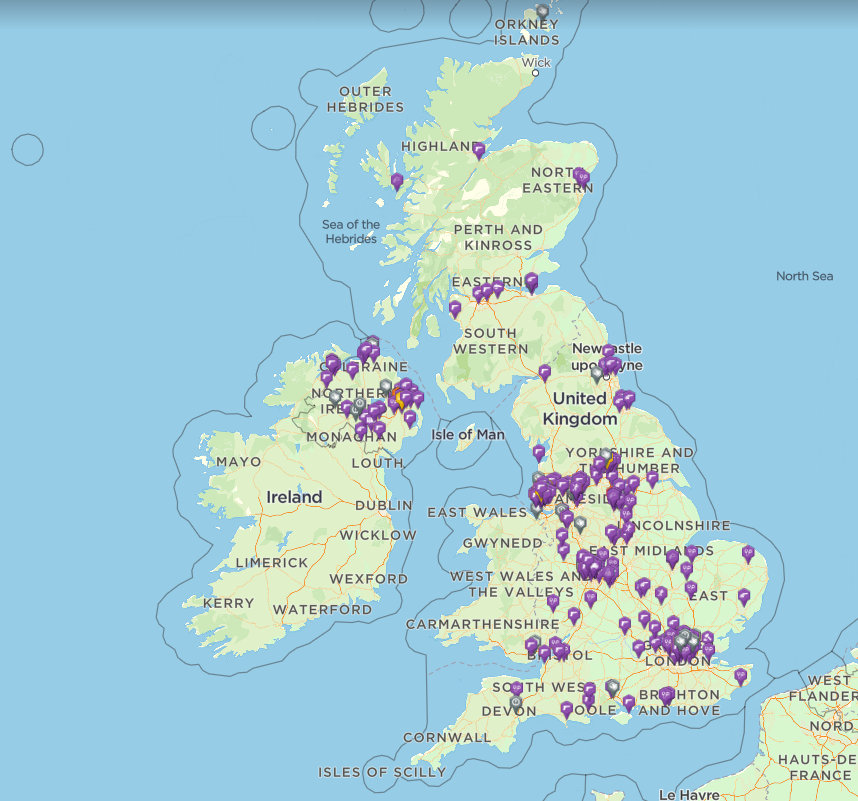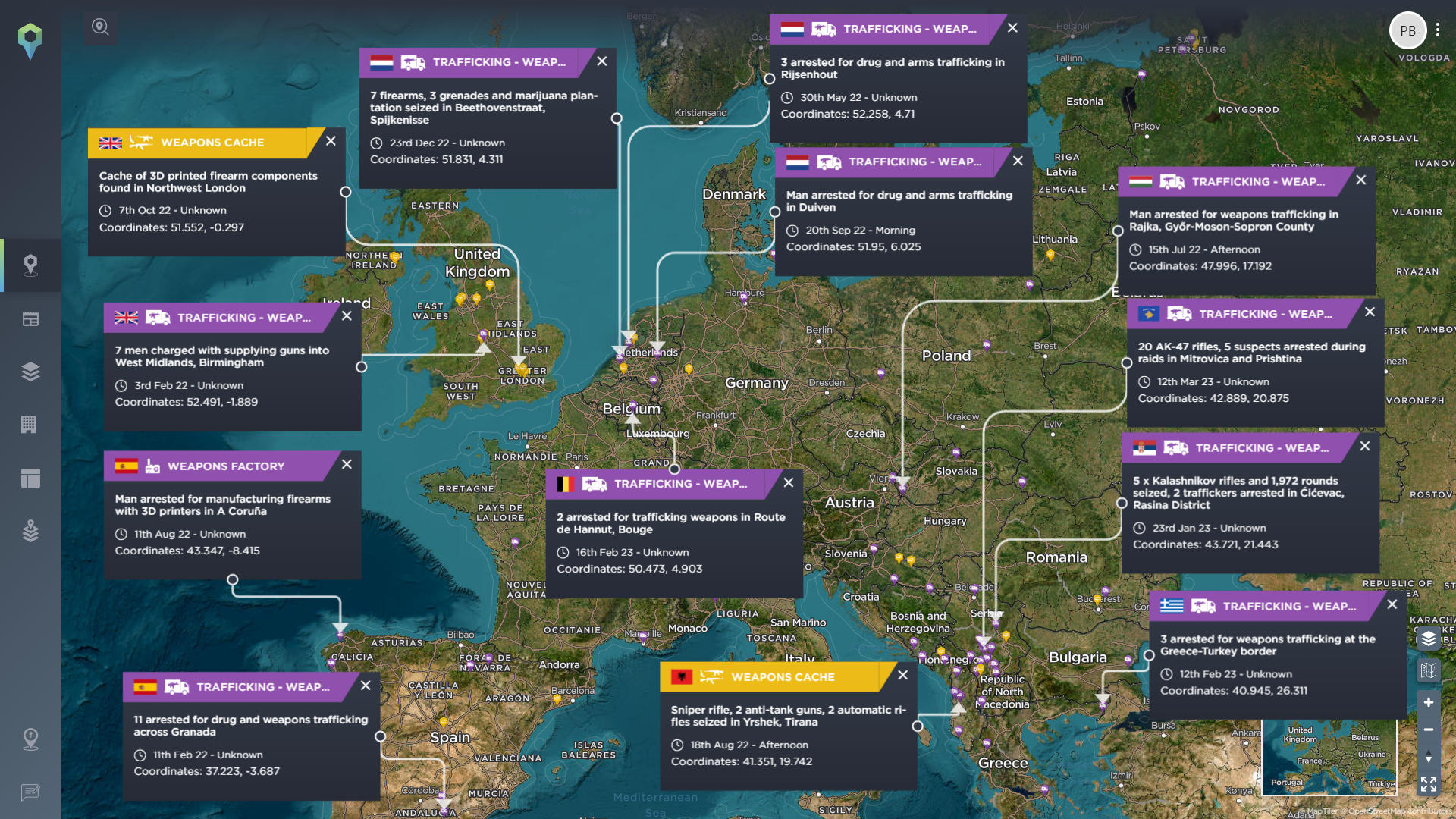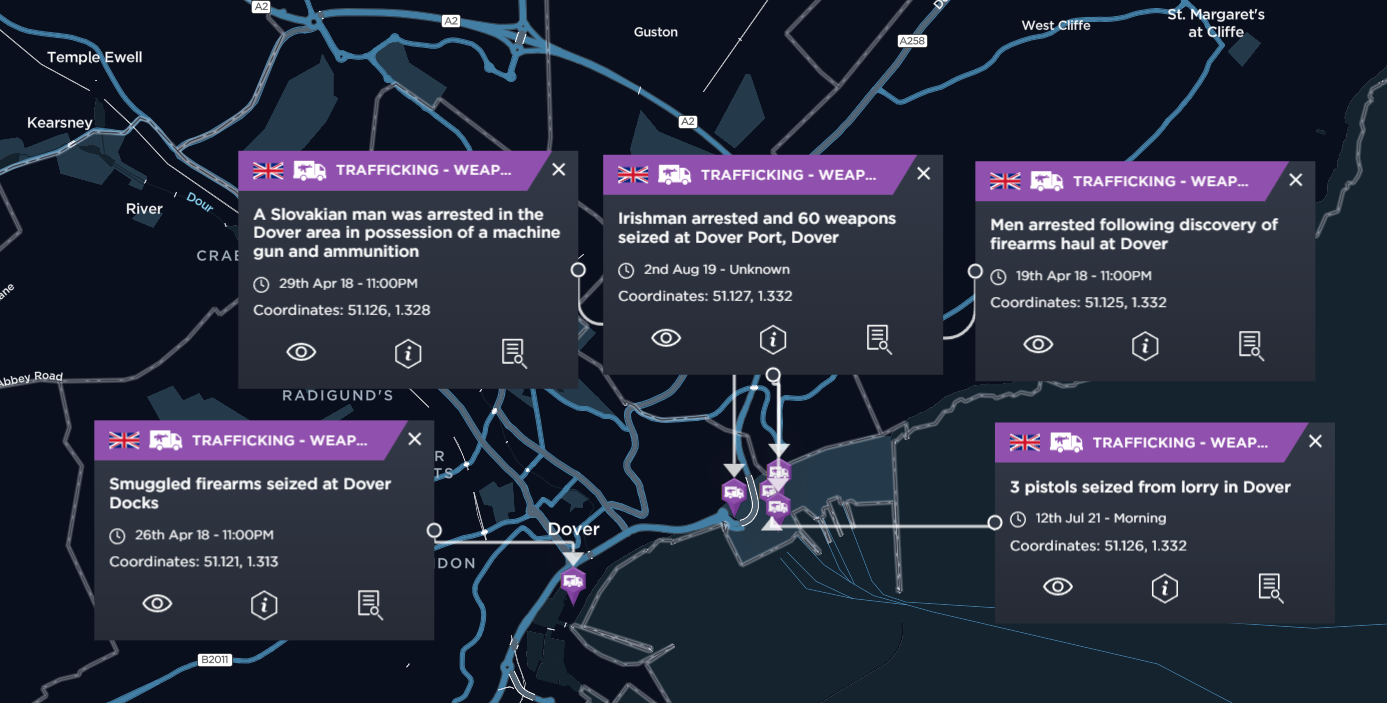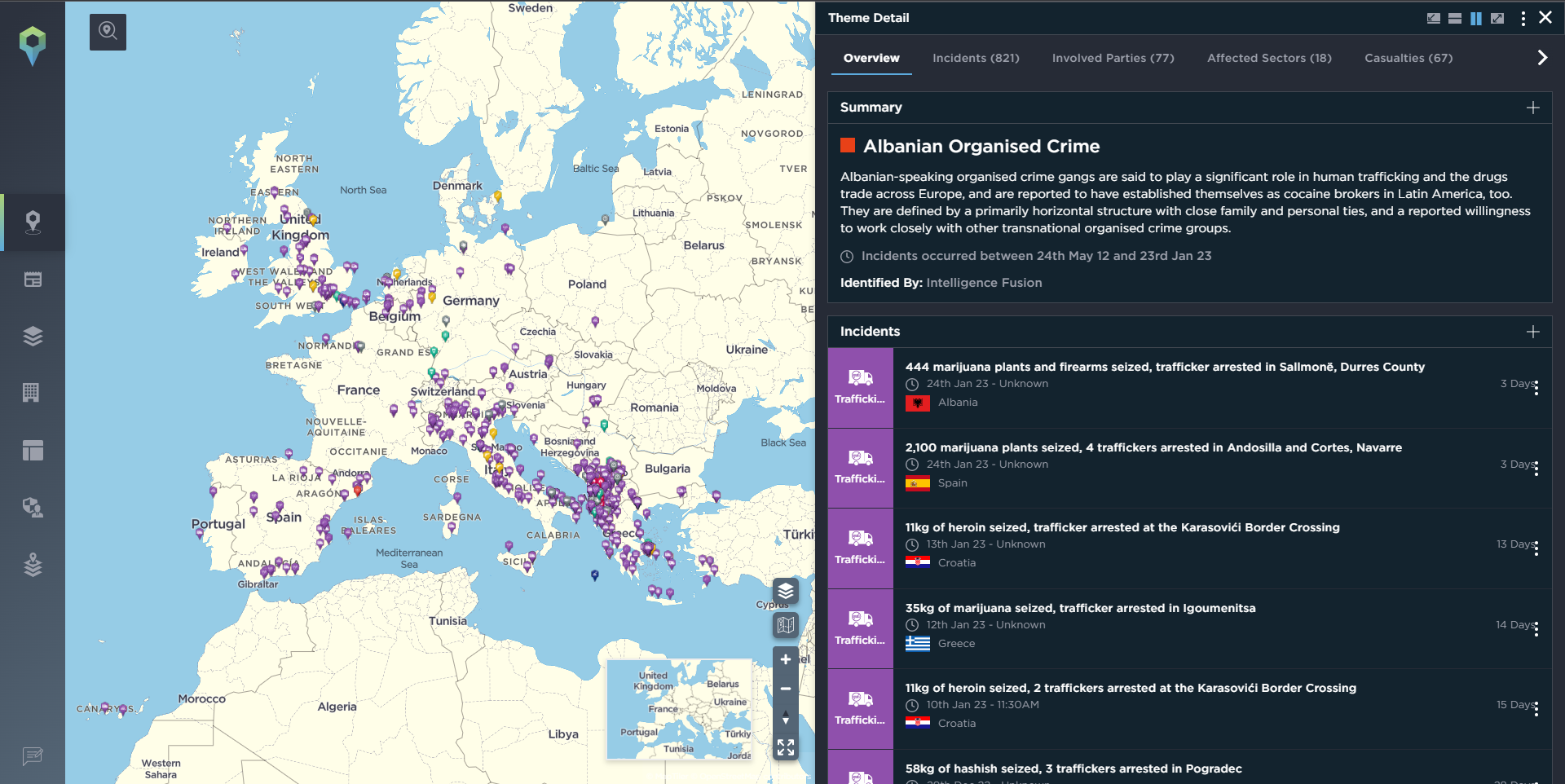Has gun crime increased in the UK?
Gun Crime in the UK: Has gun crime increased? What weapons are being used? And how are they getting to the UK?
The UK’s gun laws and regulations are notoriously strict, so much so that even deactivated weapons must go through a rigorous process and several checks to ensure that the weapon is not capable of firing live rounds. That being said, gun crime in the UK is still prevalent and rising, with 6,369 cases being reported in the year ending September 2022.
Images show incidents of gun crime in the UK in 2021 and 2022 [image source: Intelligence Fusion]
UK gun laws
Obtaining a legal firearm in the UK is possible, although in contrast with the United States, it is seen as a ‘privilege not a right’. The process to obtain a firearm involves applying for a licence. To be granted a licence you must be assessed by the licensing authority, the police and often a medical professional, although these checks do sometimes fail resulting in severe consequences. An example of this is when the Plymouth shooter was granted a licence even though the General Practitioner did not respond to the mental health assessment. Because of this, on August 12th 2021, the shooter used his legally owned shotgun to kill five and wound two before taking his own life. Strict licensing has, however, proven successful in reducing the amount of legal weapons used in crime.
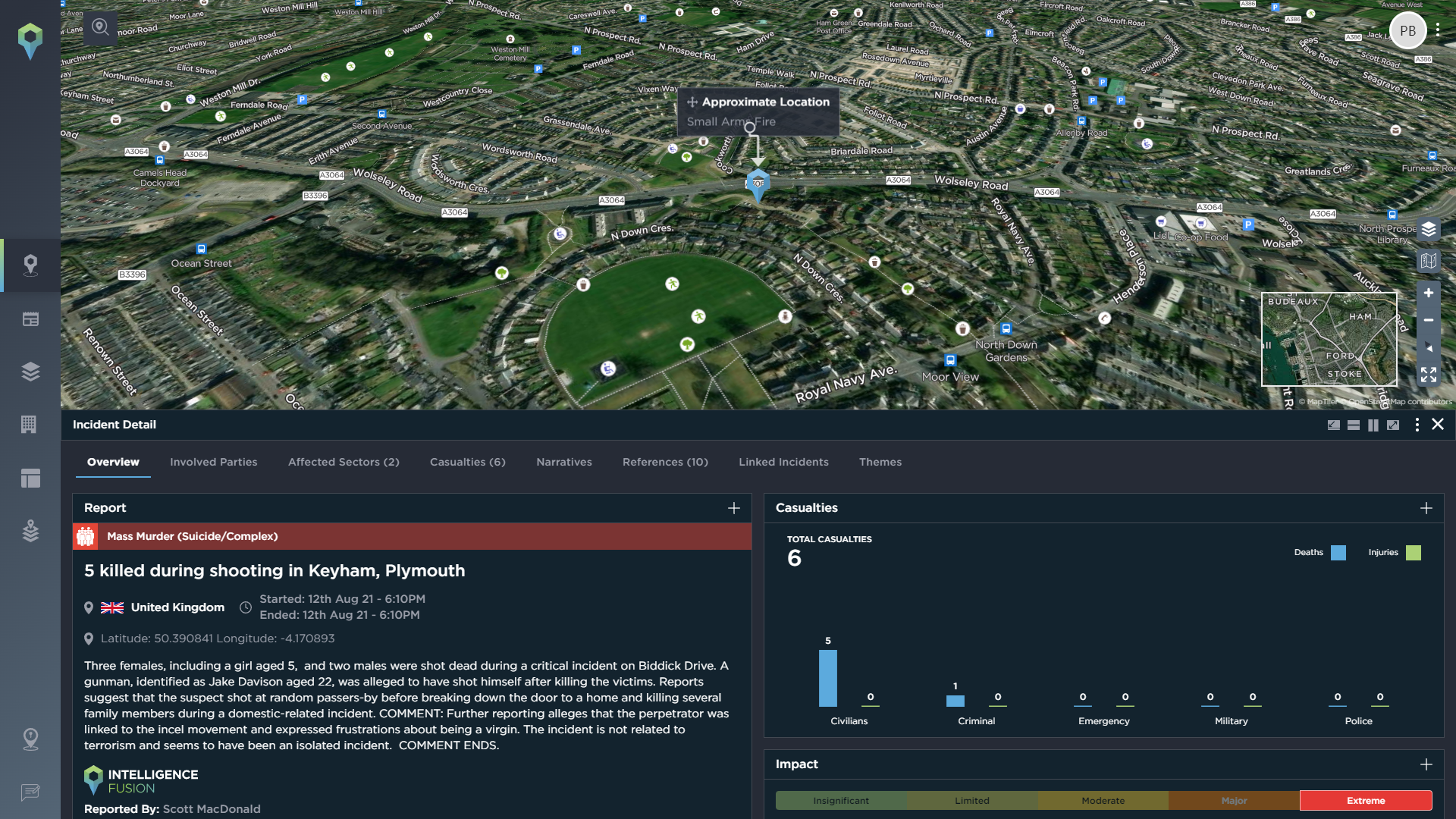
The Plymouth shooter, Jack Davison, was able to obtain a legally licensed firearm despite his GP not responding to the mental health assessment needed to attain a licence [image source: Intelligence Fusion]
Shotguns and sporting rifles are legally obtainable under a licence, with semi-automatic and pump rifles being permitted to .22 rimfire calibre exclusively. Fully automatic and submachine guns are fully banned and require explicit permission to possess. Handguns are banned ‘without good reason’ following the Dunblane massacre in 1996, where the shooter brought four legally obtained handguns to a school, killing 18 including themselves and injuring 15.
Weapons that are illegal to own include: original lethal purpose weapons that have been trafficked into and throughout the UK; blank-firing weapons illegally modified inside or outside the UK; deactivated weapons that have been reactivated; lawfully owned firearms that are stolen/lost or would otherwise fall into criminal hands; homemade firearms such as slap guns, zip guns and pipe guns; antique weapons or obsolete calibre weapons supported with home-made ammunition; and 3-D printed guns.
What firearms are used in UK gun crime?
The exact weapon used in gun crime offences in the UK is not often known. This is due to the fact that unless the weapon is reported by eyewitnesses, the suspect is caught or the weapon can be identified forensically then it is difficult to know what weapon was used. That being said, in the year ending September 2022, a total of 6,369 firearm offences were reported in the United Kingdom. 2,245 of those firearm offences involved imitation firearms such as replicas, BB guns, deactivated firearms, blanks and other non-live firing weapons. Excluding imitation firearms, it is clear that handguns are used for most offences with 1990 being reportedly used. The handguns’ smaller nature not only makes it easier to conceal and wield but easier to traffic as it takes up less room. The gun’s outlawed nature and cultural symbol may also add to its popularity. Handguns are popular within urban gangs although knives still remain more prevalent as they are more widely available.
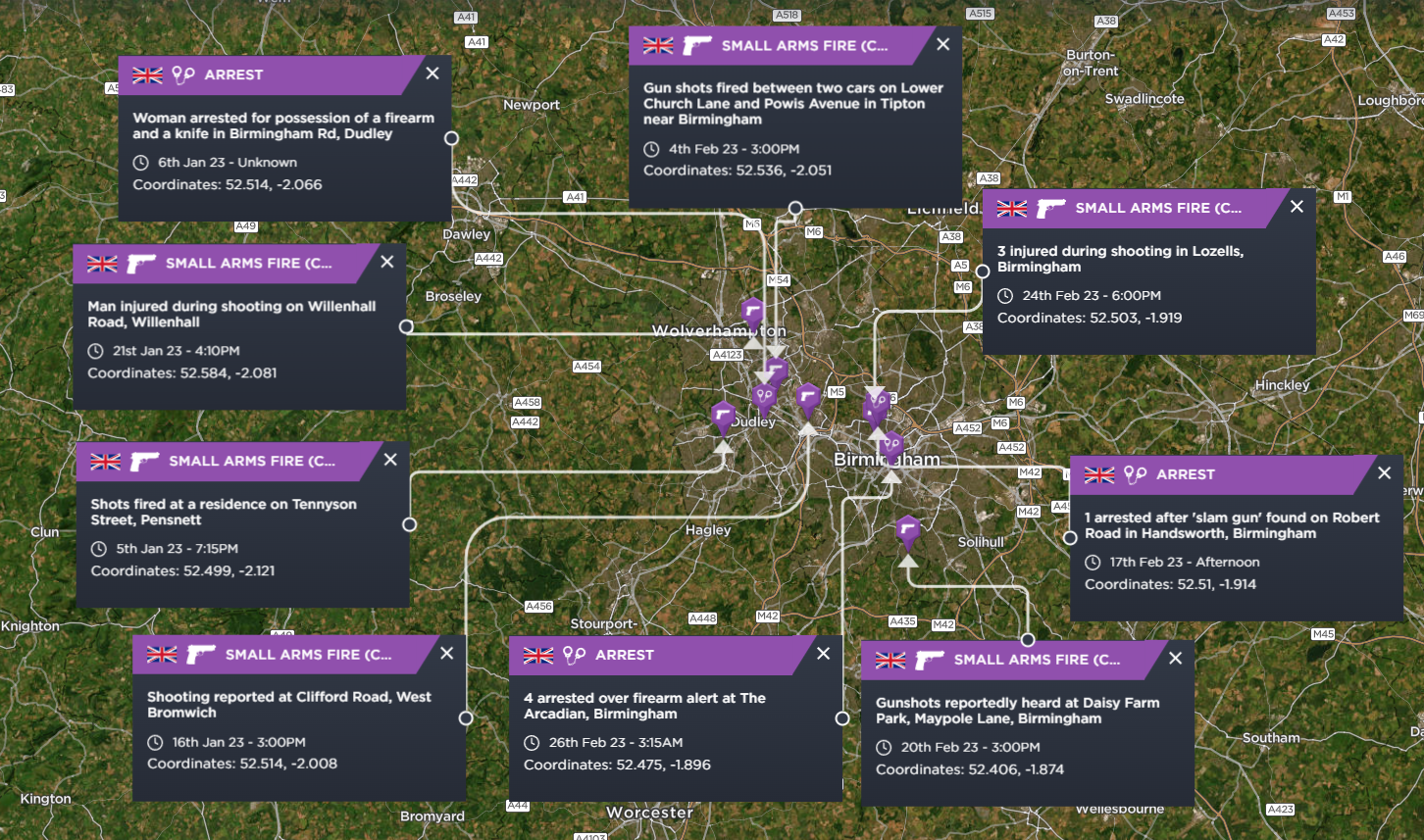
Image shows gun crime related incidents in Birmingham in January and February of 2023. Whilst conventional firearms trafficked from Europe (such as handguns) are common, homemade weapons such as ‘slap guns’ do feature in crime reporting across the UK at lower rates. [image source: Intelligence Fusion]
Following handguns in popularity are shotguns. Although legally available, they make up a significantly smaller section of identified firearms at 475. A reason for this may be that although being commercially available, they are much harder to conceal and harder to traffic illegally due to their larger size and unique ammunition. These weapons may be more likely to be used in murder, intimidation and theft as their larger stature and more destructive nature is often more intimidating. Rifles follow the same philosophy and as such are only seen in 65 offences.
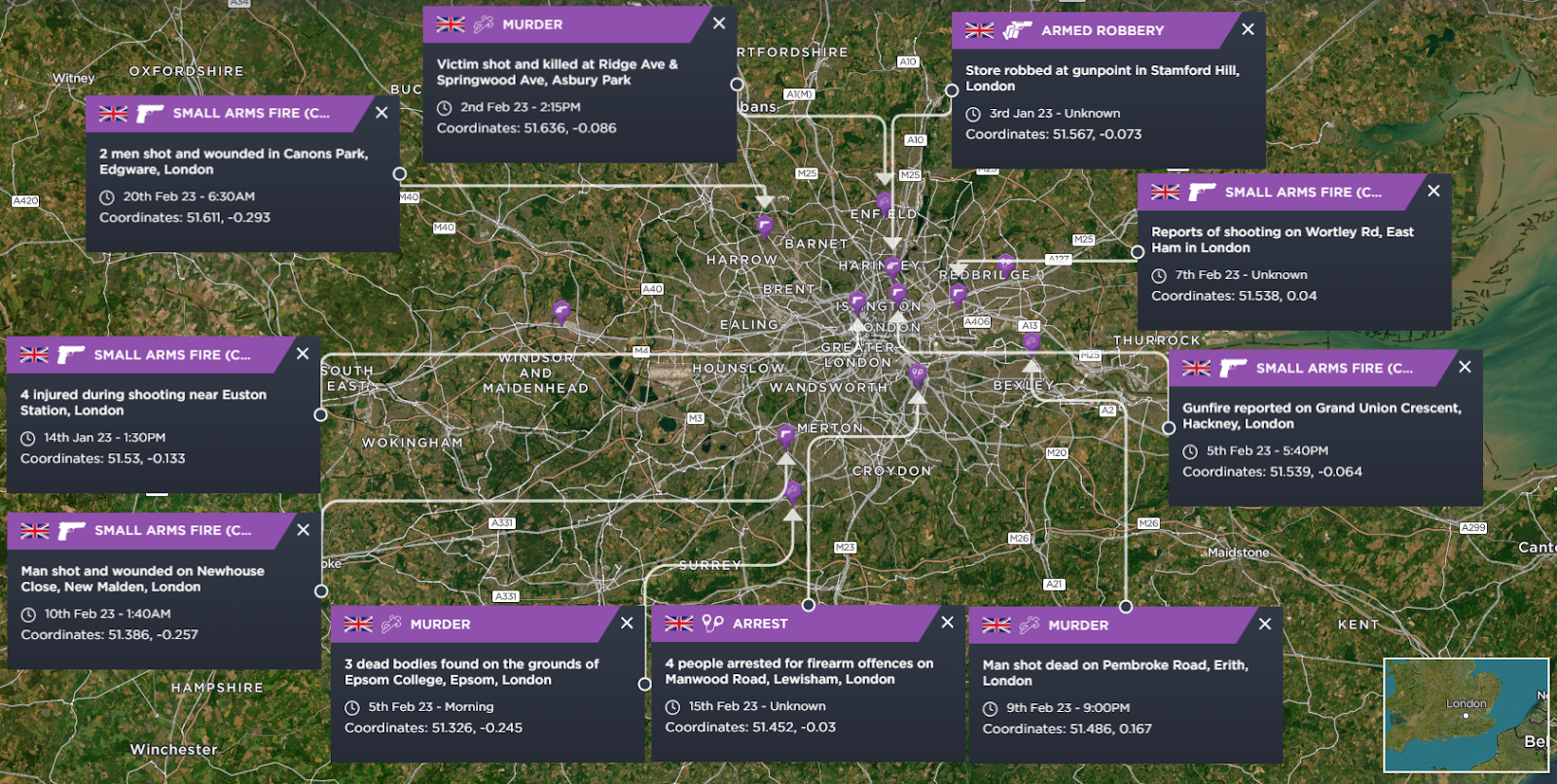
Image shows incidents relating to gun crime in London reported in January and February of 2023. Despite London gun crime being more prevalent than in other regions of the UK, knife-crime is still more common. [image source: Intelligence Fusion]
How are guns used by criminals in the UK?
Non-air firearm offences are varied in the level of severity and impact caused through the use of the firearms. The most predominant are violence against a person which constitutes intentional and reckless harm of another. In the year ending September 2021, there were 2,267 of these cases. Including robbery at 941, burglary at 160 and inciting public fear, alarm and distress at 293. It is clear that these firearms are used to intimidate, injure and rob in a criminal context.
However, knife crime is still significantly more frequent. 16,994 cases of armed robbery involved a knife in the year ending March 2022, compared to 797 of all firearms in the same timeframe. This shows that the use of a firearm against a commercial business is not as likely. In the same timeframe, firearms were recorded in 31 homicides, including two police officers, compared to 282 homicides with a knife. In spite of this, gun crime in the UK is increasing, with possession alone in the same time frame at 1,151 offences.
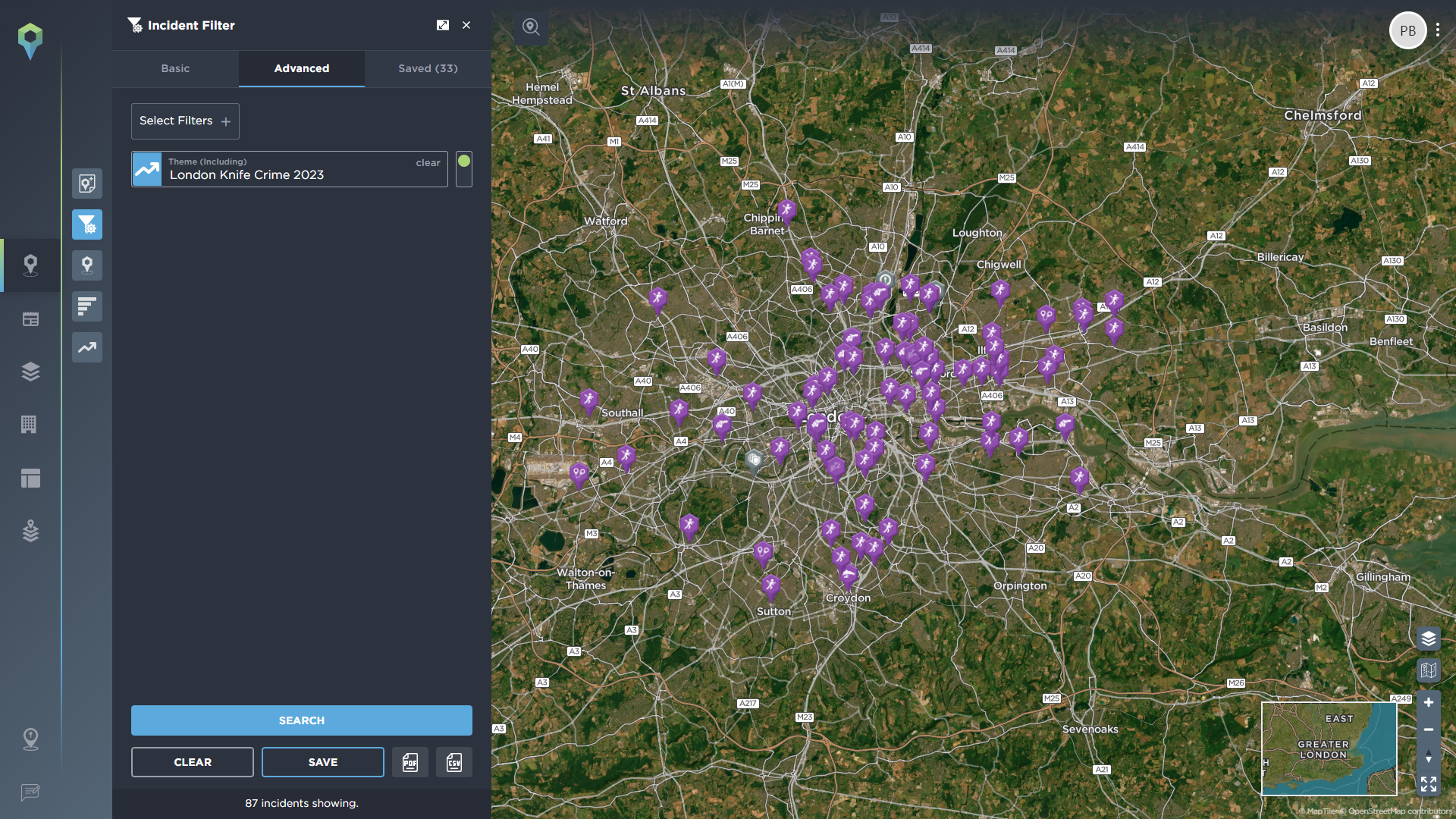
Image shows incidents related to knife crime in London from January-March 2023. Incidents have been filtered using the 'London Knife Crime 2023' theme on the Intelligence Fusion platform. [image source: Intelligence Fusion]
How guns get into the UK
These illegal firearms often start their trafficking life-cycle in Eastern Europe, where gun laws are more relaxed or black market dealing and organised crime are more prevalent. A functioning firearm is sourced from the black market, or stolen; often these can include military surplus or leftover weapons from previous conflicts. Once a buyer is sourced, the weapon will begin being transported usually to the Netherlands, which has become regarded as a hub of trafficking in Europe. Dutch Organised Criminal Gangs (OCGs) may then attempt to negotiate with a British buyer, following which the weapon then begins its path to the UK. This is often done through multiple means: Small shipments may simply place a gun and a tracker onto a lorry, where when it arrives in the UK it can be picked up without the driver of the vehicle even knowing. Larger shipments may involve a more coordinated effort where weapons are hidden among legitimate goods on a truck or ship. Some may post guns under different information in an attempt to have them delivered. Another attempt to smuggle goods may be through renting a private vessel and driving it through the ports.
Once it arrives in the UK, the buyer will then receive the gun where they may hold onto the weapon and use it in their own criminal organisations or sell the weapon on. By selling the weapon as a business model is often how urban gangs come in contact with a firearm. Those selling the weapons when in the UK often are not selective of their customer bases, hence how children or terrorist organisations may end up with the illicit weapon. These weapons will then be used to threaten the public through murder, intimidation, theft and burglary. Many weapons smugglers are often involved in drug trafficking as the routes and customer bases often follow the same trends.
Images show weapons trafficking in Europe and incidents of arms trafficking seizures and arrests around the Port of Dover [image source: Intelligence Fusion]
Alternatively the weapon may be purchased deactivated. These kinds of weapons are readily available to purchase online. The weapon can then be reactivated illegally either within the United Kingdom or on the continent. The process will differ depending on where the deactivated weapon was purchased from. This is due to having an EU standard for deactivation, the process in the UK is more thorough and deactivates the gun more, either rendering it impossible to reactivate or significantly more difficult. If the weapon is purchased elsewhere in Europe then it may be as simple as removing a bolt from inside of the barrel of the gun. For this, any gun legally entering the UK usually goes through at least one thorough check to ensure that it is up with the latest standards. A weapon that had been deactivated and/or reactivated while on the continent and then smuggled in however, would not suffer such scrutiny.
Weapons from the USA do additionally find themselves being trafficked into the UK, although this is significantly less frequent as the distance of travelling over the Atlantic not only increases the amount of checks in trafficking items but also the cost of shipping such items. Once again, these items are either smuggled in with larger legal goods or posted as components to the United Kingdom.
The threat of gun crime in the UK
Weapons trafficking and gun crime in the UK is being seen as a growing problem. Police are now reporting that firearms being used in incidents appear to be ‘clean’ new, trafficked guns opposed to ‘dirty’ reused guns that have been previously seen in other offences. Although the United Kingdom remains one of the strictest over its gun laws and is leading Europe in responding to trafficking firearms, incidents continue to occur and gun crime in the UK is still increasing.
Finally, once in the hand of the user the weapon is used for crime. Although possession of these weapons is a crime in itself, the severity of the incidents often increases with illegal weapons. With such an item as difficult and expensive as it is to acquire compared to knives, it is clear why knives are the preferred weapon of choice in the UK. Knives made up 48,931 notifiable offences in the year ending March 2022 compared to 5750 from firearms (excluding air firearms). This concludes that firearms made up 0.2% of offences last year. This clear disparity shows that even though firearms trafficking is increasing in the UK, strict gun laws make an average criminal turn more towards the cheap, readily available, accessible knife. This indicates that even though firearm trafficking is increasing, the weapons are remaining higher up in criminal networks with hardened criminals. As a result of this, and despite increases in the volume of weapons being trafficked into the UK, the majority of cases involving firearms in the UK do not directly target businesses or ‘civilians’ not involved with organised crime. Instead, firearms are typically used by criminal gangs in actions against each other.
At Intelligence Fusion, we help transform the risk management practices of organisations by providing them unrivalled situational awareness via our threat intelligence platform. We track and accurately geolocate, among other things, crime, unrest and hazards across the globe in near-real-time, as well as the impact of the changing threat landscape on businesses, governments and military.
To learn more about the data that supports our analysis, speak to a member of the team today.
